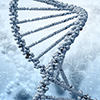Employing spatial transcriptomics to identify drivers of scaling and erythema in ichthyosis (2024)

 Keith A. Choate, MD, PhD
Keith A. Choate, MD, PhD
Professor & Chair, Dermatology Yale University
Amy S. Paller, MS, MD
Professor & Chair, Dermatology Northwestern University
Award: $50,000/year two years
OBJECTIVE:
Transcriptomic profiling has identified immune and barrier signatures in the skin of patients with ichthyosis (Paller et al, PMID: 27554821, Malik et al, PMID: 29803800, Kim et al, PMID: 35421402) and motivated successful anecdotal reports and a clinical trial testing the inhibition of the T helper 17 (Th17) pathway in ichthyosis patients (Lefferdink et al, PMID: 35218370). New techniques for spatial transcriptomics (ST) enable profiling of the full transcriptome of cells in their native tissue environment. These techniques allow us to assign gene expression changes to specific cell populations and analyze how cells interact with one another in the skin niche to drive altered skin differentiation and inflammation in ichthyosis. We aim to apply ST to skin samples from a large cohort of ichthyosis patients to identify pathogenic mechanisms that may allow repurposing of currently
available therapeutics to treat ichthyosis and build a publicly available dataset of spatially resolved single-cell gene expression changes in ichthyosis.
AIMS:
With currently available ST technology, we can quantify the expression of >18,000 genes for >10 million spatially barcoded squares on a single capture area, allowing for deep biological profiling from a single patient sample. To apply this method broadly to the skin of individuals with ichthyosis, we will employ a tissue microarray (TMA) approach to multiplex samples from multiple patients for ST profiling. Aim 1: To conduct ST on tissue from genotyped, phenotyped individuals with ichthyosis and
age- and sex-matched controls without skin disease or with atopic dermatitis (Th2-skewed) or psoriasis (Th17-skewed). Aim 2: To identify shared and distinct molecular mechanisms of ichthyosis: i) drivers of hyperproliferation and barrier dysfunction in the epidermis, ii) immune-related changes, including beyond Th17 polarization, and iii) gene expression changes correlated with phenotypic features of the ichthyosis scoring system and specific genetic variants.
METHODS:
We have already obtained biopsy tissue, genotype and phenotypic information from 20 individuals in the ichthyosis registry, allowing us to begin work upon funding. We will prospectively enroll subjects at the FIRST conference, in our clinics, and from collaborators in the Pediatric Dermatology Research Alliance (PeDRA). In addition to the 20 existing samples, we will recruit 20
additional individuals each funded year, including adolescents and adults with moderate to severe ichthyosis and >5 each with variants in genes representing canonical pathways implicated in ichthyosis. These are: TGM1 (cornified envelope), KRT1/10 (structural proteins), ALOX12B/ALOXE3 (lipid biosynthesis), NIPAL4 (lipid biosynthesis), ABCA12 (lipid transport), GJB2 (intercellular communication), SPINK5 (protease/desquamation), FLG homozygotes (barrier, severity modifier),
and STS (lipid metabolism). We will obtain 4mm punch biopsies of affected skin, medical history, and phenotype data, and will score standardized photos using the ichthyosis scoring system to assess severity. We will multiplex samples from four ichthyosis patients together with one healthy control skin sample in a TMA to be profiled with Visium High-Definition (HD) ST platform from 10X Genomics. We will perform analysis of data from all ichthyosis patients, healthy controls, and inflammatory skin diseases using an integrated computational pipeline and make the results and de-identified data publicly available through a web-hosted database.
RELEVANCE TO THE MISSION OF FIRST:
Integrated single cell analysis will advance our understanding of the molecular underpinnings of scale and erythema in ichthyosis patients, revealing new pathways for therapeutic investigation. The publicly available spatial atlas will serve as a resource for researchers across broad fields of skin biology and in drug development, serving as the foundation for future multi-omic efforts to understand dysregulated pathways in ichthyosis and develop new therapeutic approaches.
Read the one year progress report here
Researchers interested in funding Through FIRST'S Research Grant Program




